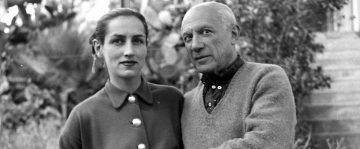Annalena McAfee at Lit Hub:

There are two types of women, Picasso said: “goddesses and doormats.” His ideal muse—helpmeet and source of creative inspiration—was a hybrid; decorative enough to hold the artist’s eye, and meek enough, as patient unpaid model, to maintain whatever pose he required of her without complaint. Ideally, she should be a biddable lover and accept that great artists had great appetites and she could not claim exclusivity in her role. If she also bore his children, kept house, cooked and took on secretarial duties, so much the better.
Picasso did not, of course, invent the arrangement. The history of western art can be read as a story of male genius, tortured and often truculent as it strove to make one pure, truth-telling mark on an imperfect world, supported by a legion of handmaidens whose self-abnegating silence was immortalized on canvas and in bronze—from Benvenuto Cellini’s abused Nymph Caterina, through the Pre-Raphaelite Brotherhood’s evanescent Lizzie Siddal to Picasso’s Weeping Woman, Dora Maar. Genius required it, exempting the artist from the normal rules of human relationships. Decency was for the mediocre.
more here.
